
Big Drum Dance of Jino Ethnic Minority in Jinghong City, Xishuangbanna
The Jino Big Drum Dance, known in the Jino language as “Si Tu Guo” (“Si Tu” means big drum, “Guo” means to dance), is a unique traditional dance of the Jino ethnic group in Jino Mountain Jino Ethnic Township (基诺山基诺族乡), Jinghong City (景洪市), Xishuangbanna Dai Autonomous Prefecture (西双版纳傣族自治州), Yunnan Province (云南省). The dance originates from the Jino creation myth, in which the ancestral goddess Amo Yao Bai is said to have used a big drum to save her people. Thus, the Jino people regard the big drum as a sacred object and refer to themselves as “the people who walked out of the drum”.
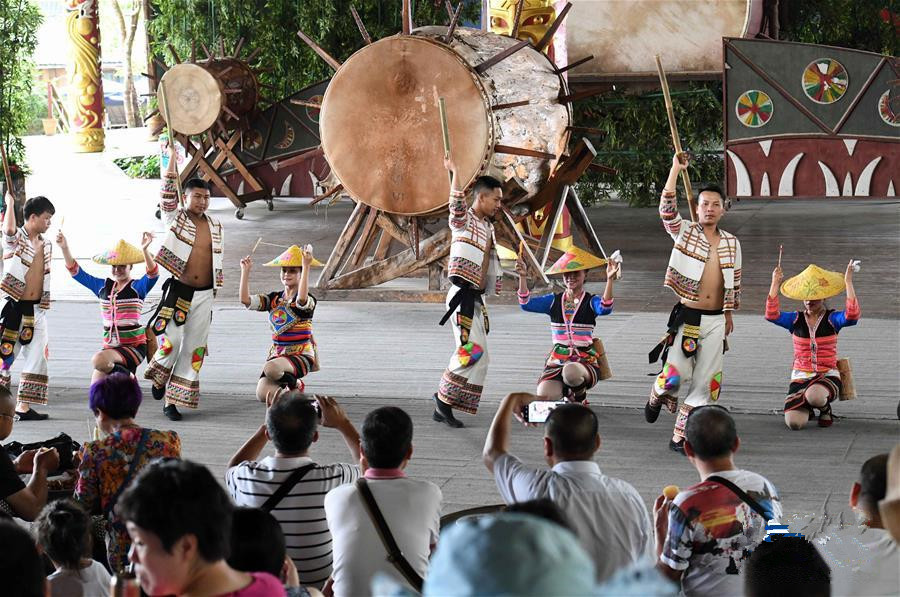
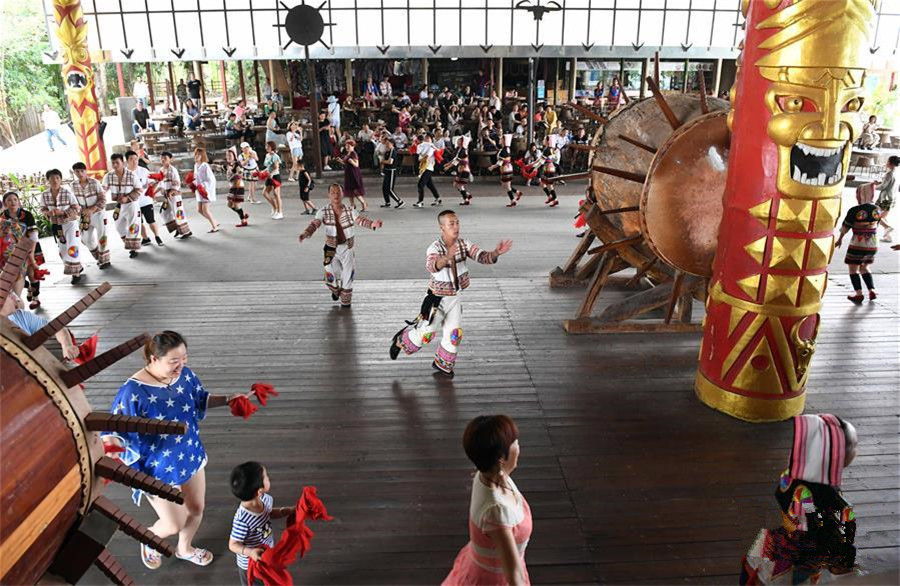
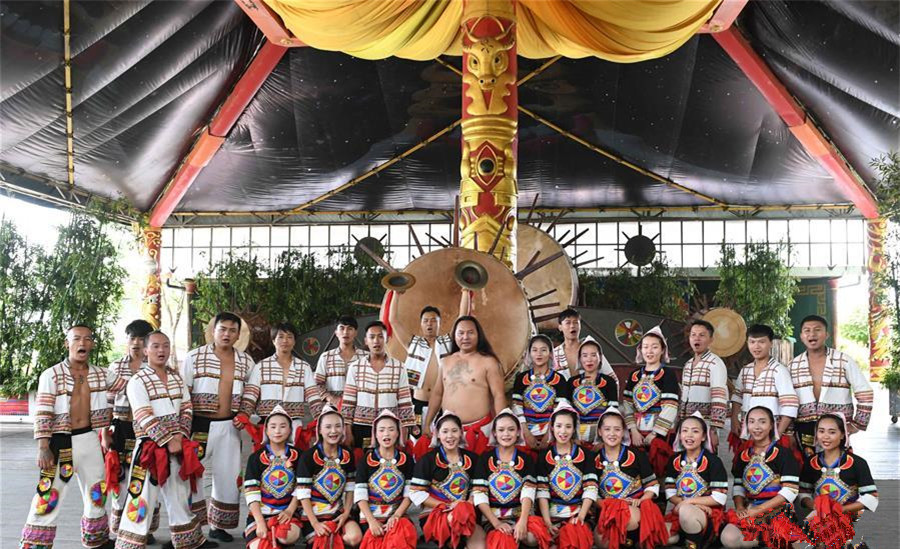
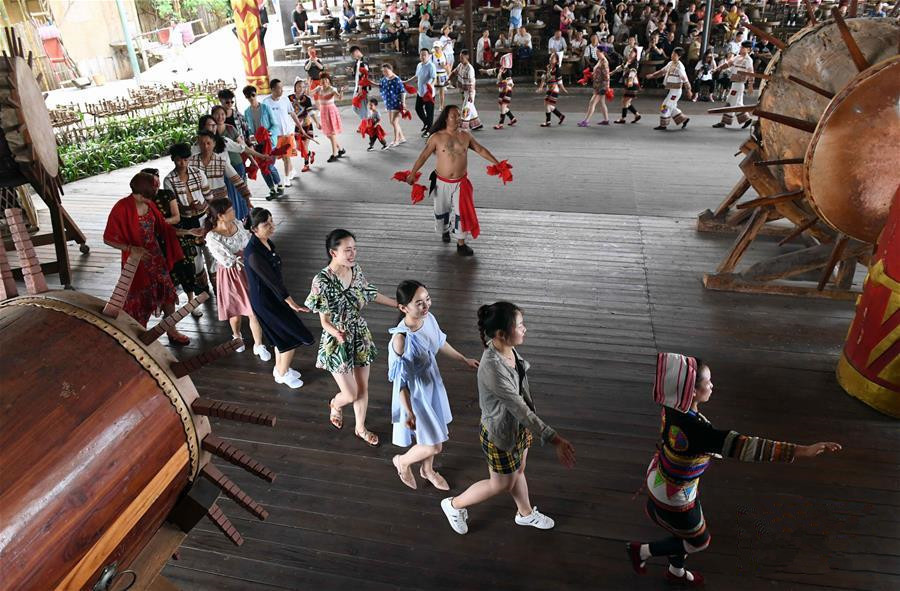
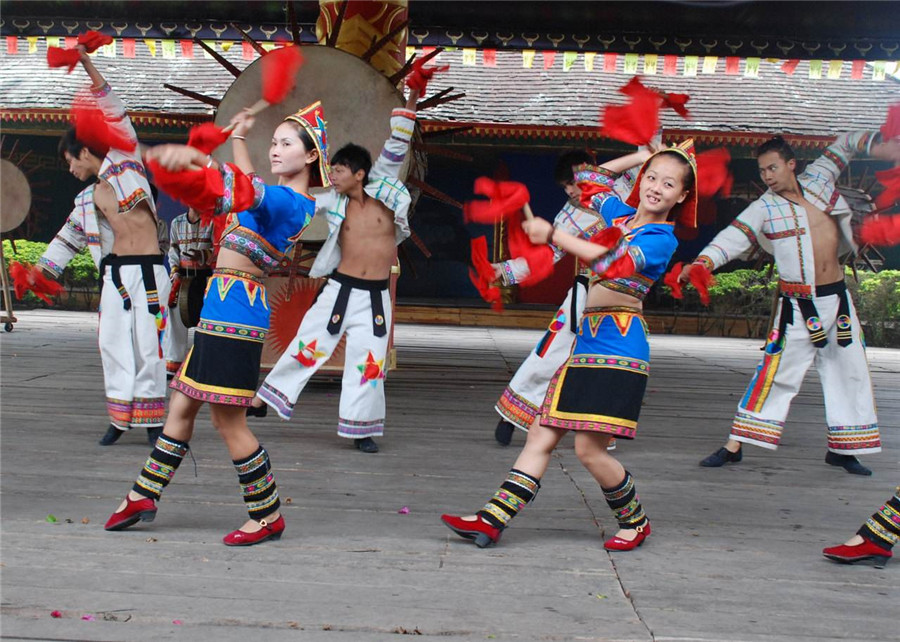
Cultural Connotations
Myth and Belief
Festivals and Rituals
- Te Mu Ke Festival (Iron Beating Festival): Held three days after the beginning of spring, it is the most important festival of the Jino people, symbolizing the transition from the Stone Age to the Iron Age of agricultural farming.
- Family God “Tie Luo Mo Mo” Worship: Conducted in March when the hundred flowers are in full bloom, it is a ritual to pray for peace and good fortune.
- Village Elder’s House Building Ceremony: When a new house is completed, a drum sacrifice and Jino Big Drum Dance are performed to pray for blessings.
Dance and Music
- Ritual Process: Before the dance, a piglet and a chicken are slaughtered for sacrifice. Seven elders recite scriptures to pray for blessings. Then, the drummer dances while beating the drum, accompanied by gongs, cymbals, and singing.
- Dance Movements: The movements include “worshipping the spirits,” “joyful dance,” and “New Year’s tune,” mainly featuring bending the knees, raising the hands, and turning the body.
- Lyrics “Wu You Ke”: The lyrics cover the history, morality, and traditional customs of the Jino people.
Artistic Features
Symbolism of the Sun Drum
Evolution of Performance Forms
Inheritance and Protection
Endangered Status
Protection Measures
- Intangible Cultural Heritage Inheritance: After being listed as a national intangible cultural heritage in 2006, a training center was established in Jino Township to cultivate young dancers.
- Cultural Promotion: The Jino Big Drum Dance has become a performance item in festivals and tourism, and has won awards in events such as the CCTV Dance Competition.
- Dual Protection: Some villages have two drums – one for performance and the other as a sacred object used only for sacrificial purposes.
For Chinese version please go to:
http://www.ynich.cn/view-ml-11111-1136.html

 7 Days GolfingTour
7 Days GolfingTour
 8 Days Group Tour
8 Days Group Tour
 8 Days Yunnan Tour
8 Days Yunnan Tour
 7 Days Shangri La Hiking
7 Days Shangri La Hiking
 11 Days Yunnan Tour
11 Days Yunnan Tour
 6 Days Yuanyang Terraces
6 Days Yuanyang Terraces
 11 Days Yunnan Tour
11 Days Yunnan Tour
 8 Days South Yunnan
8 Days South Yunnan
 7 Days Tea Tour
7 Days Tea Tour
 8 Days Muslim Tour
8 Days Muslim Tour
 12 Days Self-Driving
12 Days Self-Driving
 4 Days Haba Climbing
4 Days Haba Climbing
 Tiger Leaping Gorge
Tiger Leaping Gorge
 Stone Forest
Stone Forest
 Yunnan-Tibet
Yunnan-Tibet
 Hani Rice Terraces
Hani Rice Terraces
 Kunming
Kunming
 Lijiang
Lijiang
 Shangri-la
Shangri-la
 Dali
Dali
 XishuangBanna
XishuangBanna
 Honghe
Honghe
 Kunming
Kunming
 Lijiang
Lijiang
 Shangri-la
Shangri-la
 Yuanyang Rice Terraces
Yuanyang Rice Terraces
 Nujiang
Nujiang
 XishuangBanna
XishuangBanna
 Spring City Golf
Spring City Golf
 Snow Mountain Golf
Snow Mountain Golf
 Stone Mountain Golf
Stone Mountain Golf












